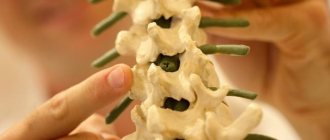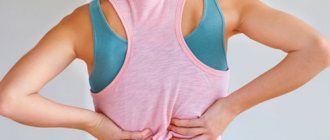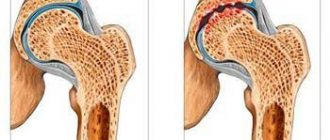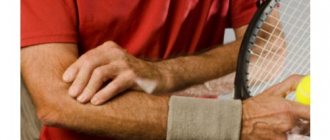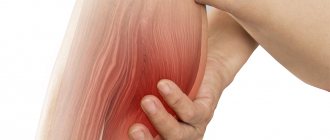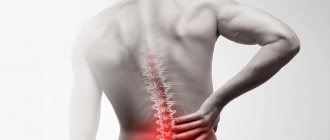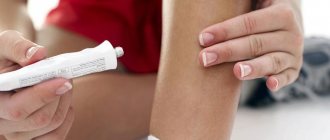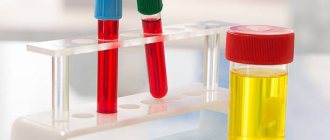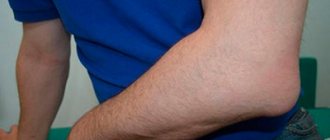Back pain is one of the most common reasons for visiting doctors. It often becomes the cause of disability around the world. According to statistics, more than 70% of the world's population have experienced back and lumbar pain at least once. Fortunately, in most cases there are ways to prevent or treat back pain. Quite often, the pain goes away on its own within a few days due to the activation of the body’s own protective mechanisms. It can have a different character:
- muscle pain;
- shooting or stabbing pain;
- pain radiating to the leg;
- limiting back mobility
At CELT you can get advice from a specialist algologist.
- Initial consultation – 4,000
- Initial consultation with the head of the Pain Clinic - 4,500
Make an appointment
What diseases cause back pain?
The causes of back pain can be different. Often this is damage to the muscles or ligaments of the back due to heavy lifting, sudden movements or injuries. The causes of back pain in the lumbar region can be a number of diseases:
- osteochondrosis, spondylosis, spondyloarthrosis;
- sprain, myositis, muscle bruise;
- scoliosis, lordosis, kyphosis, kyphoscoliosis;
- osteomyelitis, epiduritis, ankylosing spondylitis;
- intervertebral hernia;
- intercostal neuralgia, diseases of the pelvic organs;
- spinal protrusion
- spinal stenosis, instability and spinal fractures;
- radiculitis, lumbago or lumbago, inflammation of the sciatic nerve;
- occasionally - spinal neoplasms, myeloma.
Physiotherapy
The development of skills in the correct physiology of movements and the design of the spinal column helps to achieve improvement in the condition of the spine.
Diseases of the back and spine are treated with the following methods with proven effectiveness:
- manual therapy;
- suspension systems (treatment in “zero gravity”);
- Gleason loops for developing the neck;
- joint gymnastics according to Bubnovsky;
- myofascial release,
- post-isometric relaxation of paravertebral muscles;
- training in correct posture and safe options for everyday movements associated with lifting weights.
Degenerative-dystrophic changes in the spine.
When should you consult a doctor immediately?
In most cases, back pain resolves without treatment within two weeks. If this does not happen, please consult a doctor. In rare cases, back pain signals a serious medical problem.
. Therefore, you should urgently seek medical help if:
- having problems urinating or defecating;
- there is a fever;
- pain spreads down the leg or radiates to both legs;
- the pain was caused by a fall, blow to the back or other injuries;
- the pain is intense and does not go away after resting and taking painkillers;
- pain is accompanied by weakness and numbness in the leg;
- pain is accompanied by sudden weight loss.
Individuals should also seek professional advice:
- over 50 years old;
- who have ever been diagnosed with cancer or osteoporosis;
- who take steroid hormones.
Osteochondrosis
Osteochondrosis is dystrophic and degenerative processes in the area of cartilage that connects the vertebrae. The tissue does not receive enough nutrition, so the intervertebral disc becomes more fragile and cannot cope with its supporting and shock-absorbing functions.
The more such a disc is flattened, the more pressure it puts on the nerve endings. And the nerve endings, as we know, absolutely cannot tolerate such disrespect and take revenge very painfully during any of our movements.
It can occur in the neck area - cervical osteochondrosis. In the chest area - thoracic osteochondrosis. And in the lower back - lumbar osteochondrosis. It is treated with medications, massage and exercise, as well as physiotherapy. Manual therapy and acupuncture also work well.
In the fight against osteochondrosis, all means are good, but only medication is very rarely 100% effective. You can find a reliable course that you can study at home on this secret page.
You will notice positive changes within a couple of weeks, and the exercises will be useful not only for those who are already sick, but also for those who want to prevent back diseases.
Which specialists should I contact?
If you want to be sure that you will receive high-quality medical care, contact the CELT Pain Clinic. Describe the nature, accompanying symptoms and causes of lower back pain - and, if necessary, you will receive a referral for examination to a specialist to solve a specific problem, without endless walking in circles. These may be doctors of the following specialties:
- traumatologist-orthopedist;
- neurologist;
- neurosurgeon;
- urologist;
- phthisiatrician;
- oncologist;
- rheumatologist;
- nephrologist;
Who is most likely to suffer from spinal diseases?
If you lead a healthy and active lifestyle, many diseases will be avoided. But there are groups of people who are most susceptible to pain in the spinal column. Let's take a closer look:
- Sedentary lifestyle. These are disabled people, drivers, office workers who spend most of the day hunched over at their workplace and often have back problems.
- Hard physical work. Those who lift weights every day have an increased risk of back pain.
- Diseases of the musculoskeletal system. People with diseases of the musculoskeletal system feel a pain reaction in the spine. For example, a person with flat feet has a negative chance of developing osteochondrosis.
- Violation of the correct way of life. This includes all people who do not eat properly, wear high heels, neglect sports and are overweight.
Most often, pain in the spine occurs in the age group from 35 to 60 years. Women are more susceptible than men.
Risk factors
Back pain can occur in absolutely anyone at any age, including children and adolescents. However, the following factors increase the risk of their occurrence:
- Age.
Most often, pain in the back and lower back appears at the age of 30; - Sedentary lifestyle.
Weakening of the back muscles due to low physical activity is one of the factors causing problems with the spine; - Overweight.
Extra pounds create additional stress on the vertebrae and intervertebral discs, leading to the development of diseases; - Accompanying illnesses.
Back pain occurs with a number of diseases, including cancer. - Psychological disorders.
People who suffer from depression or anxiety are at greater risk of developing back pain.
Intervertebral hernia
Among the patients there are many who suffer from intervertebral hernia. It is difficult to recover from it forever, since it will take a lot of time to complete the entire range of health measures. A herniated disc puts pressure on the spinal cord and its nerve roots. This disease is considered dangerous for the spine, as it can ultimately lead to paralysis and atrophy.
Intervertebral hernia is a silent and insidious enemy for the spine
Causes of hernia:
- osteochondrosis;
- metabolic problems;
- infections;
- spinal injuries;
- genetic inheritance.
Symptoms of intervertebral hernia:
- pain in the neck, spreading to the shoulders and arms (with a hernia in the cervical region), in the lower back, in the legs (with a hernia in the lumbar region), in the chest (with a lesion in the thoracic region).
- often and severely dizzy.
- arms, legs, shoulders, groin and other parts of the body go numb.
- it is difficult for a person to take the necessary body positions.
Diagnosis of back pain
In order to make a correct diagnosis, a number of studies are carried out at the CELT clinic.
MRI of the spine
The gold standard for diagnosing back pain is magnetic resonance imaging (MRI). Depending on the changes detected on the MRI, in conjunction with the clinical picture and neurological status, the doctor draws up a treatment plan for the patient. In addition, the MRI picture allows you to predict how the disease will progress.
Diagnostic blockades
Diagnostic blockades are highly informative for confirming the diagnosis in patients with a complex, unclear clinical picture. For example, the effectiveness of diagnostic blockade of the facet or sacroiliac joints confirms the axial nature of the patients’ pain and is an important criterion for setting indications for radiofrequency denervation of the corresponding joints.
In addition to their high diagnostic value, intra-articular blockades are a therapeutic procedure and have a pronounced analgesic effect with varying durations of action. For patients with radicular pain, diagnostic blocks can be performed when there is a need for additional diagnostics.
Dislocation/subluxation/fracture-dislocation
They are classified as unstable injuries and are therefore considered dangerous to human health. Let's understand the terminology:
- A dislocation is an extensive displacement of one vertebra in relation to its upper and lower neighbors;
- Subluxation is a partial displacement of the vertebrae relative to each other;
- Fracture dislocation is a combination of an intra-articular fracture with dislocation in the damaged joint.
With such injuries, patients experience pain (localization depends on the location of the injury), limited mobility, swelling over the damaged vertebra, widening of the interspinous space, bayonet-shaped curvature of the projections of the spinous processes, and muscle spasm.
Separately, transdental dislocation of the atlas should be highlighted. Such damage occurs when landing on the head and sharply bending the head in front. In this case, the atlas tooth breaks and the vertebra moves forward.
If the displacement was too sharp, as a result of compression of the medulla oblongata, paralysis of the vasomotor and respiratory centers, the person dies instantly.
With a smoother displacement, the patient in the post-traumatic period develops neck pain radiating to the occipital region, immobility in the neck and a forced position of the head (it is constantly pushed forward).
Treatment for back pain
Back pain is treated in different ways:
Pharmacological therapy
Nonsteroidal anti-inflammatory drugs have a pronounced effect, but the effectiveness of their use in the long term is relative due to the rapid development of addiction and the risk of side effects. Muscle relaxants have proven themselves well, especially when used in the acute period. Antidepressants and some anticonvulsants are used with good effect in the complex treatment of pain. The treatment regimen is selected by the doctor individually for each patient, depending on the patient’s tolerance to the medications, individual sensitivity, and the severity of the therapy effect.
Therapeutic blockades performed under x-ray control
In the last decade, due to the rapid and pronounced analgesic and therapeutic effect, the use of minimally invasive procedures, including epidural and intra-articular blocks, has sharply increased. An epidural block is the procedure most often prescribed for radicular disease. If the diagnosis is correct and there are indications for this procedure, the effect is simply amazing! Pain relief is achieved for a period of 6 weeks to 6 months, which allows in many cases to avoid the need for surgical treatment.
Neurosurgical operations
The range of neurosurgical operations for back pain is wide. Techniques used include spinal cord decompression, discectomy, foraminotomy, intervertebral disc replacement, minimally invasive and microsurgery, as well as a number of other surgical techniques.
Radiofrequency denervation
Radiofrequency denervation (RFA) is one of the most optimal treatment methods to avoid or significantly delay surgical intervention. Thanks to it, you can not only quickly eliminate pain symptoms, but also minimize or completely eliminate the use of painkillers. Recovery after this procedure occurs quite quickly, which allows you to quickly return to your normal lifestyle.
Make an appointment through the application or by calling +7 +7 We work every day:
- Monday—Friday: 8.00—20.00
- Saturday: 8.00–18.00
- Sunday is a day off
The nearest metro and MCC stations to the clinic:
- Highway of Enthusiasts or Perovo
- Partisan
- Enthusiast Highway
Driving directions
Tuberculous spondylitis
The causative agent of this disease is the tuberculosis bacillus, which is introduced through the hematogenous route. Usually the lesion is the lungs.
Mycobacteria are localized in the vertebrae, where they begin to multiply. Over time, the vertebra and disc are destroyed. Drip abscesses form, that is, liquid pus accumulates, which occurs away from the lesion and is able to move.
Gradually, pus and mycobacteria affect the entire spine. The disease can develop in any part of the spine, but the lumbar and thoracic ones are most often affected.
The first signs of pathology are preceded by symptoms of lung disease: cough, shortness of breath. Then the clinical manifestations take on a neurological character, which depends on the stage of development of the pathology.
Prespondylytic phase. At this stage, tuberculous granuloma is formed, and it lasts up to 2 years. Typical symptoms for this period:
- Weakness, profuse sweating, lethargy and lack of appetite.
- Increase in body temperature to 38 degrees.
- Children are moody.
- Muscle pain and headache.
- Dramatic weight loss.
- Nausea.
The symptoms are still mild, as the infection has not yet spread.
Spondylytic stage. At this stage, the granuloma disintegrates and bone tissue is destroyed. The following symptoms begin to appear:
- Curvature of the spine causes changes in posture.
- Pinched nerve endings cause radiculopathy.
- The pain spasms the back muscles.
- Motor activity decreases.
- Numbness of arms and legs.
- Sometimes the spinous process protrudes on the back in the area of the affected vertebra.
In addition, signs of intoxication are observed: sweating, nausea and loss of appetite.
Postspondylytic stage. During this period, the inflammation subsides and the pain syndrome disappears. Neurological changes and damage to the spine become pronounced.
The course of the disease depends on the immune system.
